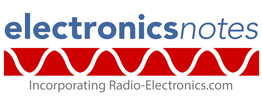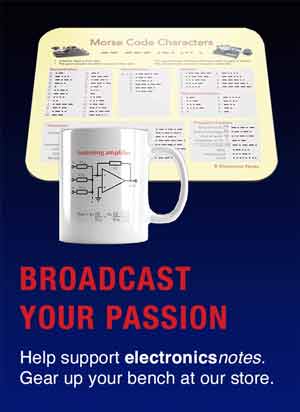Home » Component data » Transistor data » this page
BC550 Transistor Data
Key transistor data for the BC550 general purpose transistor including key electrical parameters, pinout, package type and many other key transistor details.
Key details and performance parameters for the BC550 transistor.
| BC550 transistor parameters & data |
|
|---|---|
| Parameters | Details |
| Transistor type | Low noise silicon general purpose NPN transistor |
| Package type | TO92 (plastic) |
| VCBO max (V) | 50 |
| VCEO max (V) | 50 |
| VEBOmax (V) | 5 |
| VCEsat (V) | 250mV @ I |
| IC max (mA) | 100 |
| TJ Max °C | 150 |
| PTOT mW | 500 |
| fT min (MHz) | 300 |
| COB | |
| hfe | 110 - 800 |
| IC for hfe | 10 |
| Similar / equivalents | |
Outline:
Pinout:
Explanation of transistor parameters
| Parameter | Explanation |
|---|---|
| VCBO Max | Maximum collector-base voltage with emitter open circuit . |
| VCEO Max | Maximum collector-emitter voltage with base open circuit. |
| VEBO Max | Maximum emitter-base voltage with collector open circuit. |
| VCEsat (included where applicable) | The voltage drop across the collector-emitter when the transistor is fully saturated (acting as a closed switch). |
| IC Max | Maximum collector current. |
| Parameter | Explanation |
|---|---|
| TJ | Maximum junction temperature. |
| PTOT Max | Maximum device dissipation normally in free air at 25°C unless other conditions indicated. |
| fT Min | Minimum cutoff frequency at which the current gain in a common emitter circuit falls to unity. |
| COB Max | Maximum collector capacitane, normally measured with emitter open circuit. |
| hFE | DC current gain for HFE at IC. [Note hfe is the small signal gain and although this may be slightly different, the transistor current gain will vary considerably from ne transistor to the next of the same type.] |
| PTOT Max | Maximum device dissipation normally in free air at 25°C unless other conditions indicated. |
These are the main transistor parameters that have been included in our list. There are others, but these help quantify the main elements of the performance of the transistor.
Please note, that the data given is the best estimate we can give within a tabulated summary of this nature. Parameters also vary between manufacturers. Electronics Notes cannot accept any responsibility for errors, inaccuracies, etc, although we do endevaour to ensure the data is as accurate as possible.
Notes and supplementary information
This is a low noise and higher voltage version in the BC546, 547, 548, 549, 550 family of general purpose and switching transistors family. The noise figure for this device is 3 dB max, but typically 1.4 dB at 1 kHz.
• Availability & sources
The BC550 is available from a number of stockists and electronic component distributors many of which are given in the table below.
BC550 Component Distributor, Stock and Pricing
 Written by Ian Poole .
Written by Ian Poole .
Experienced electronics engineer and author.
Return to Component Data menu . . .





